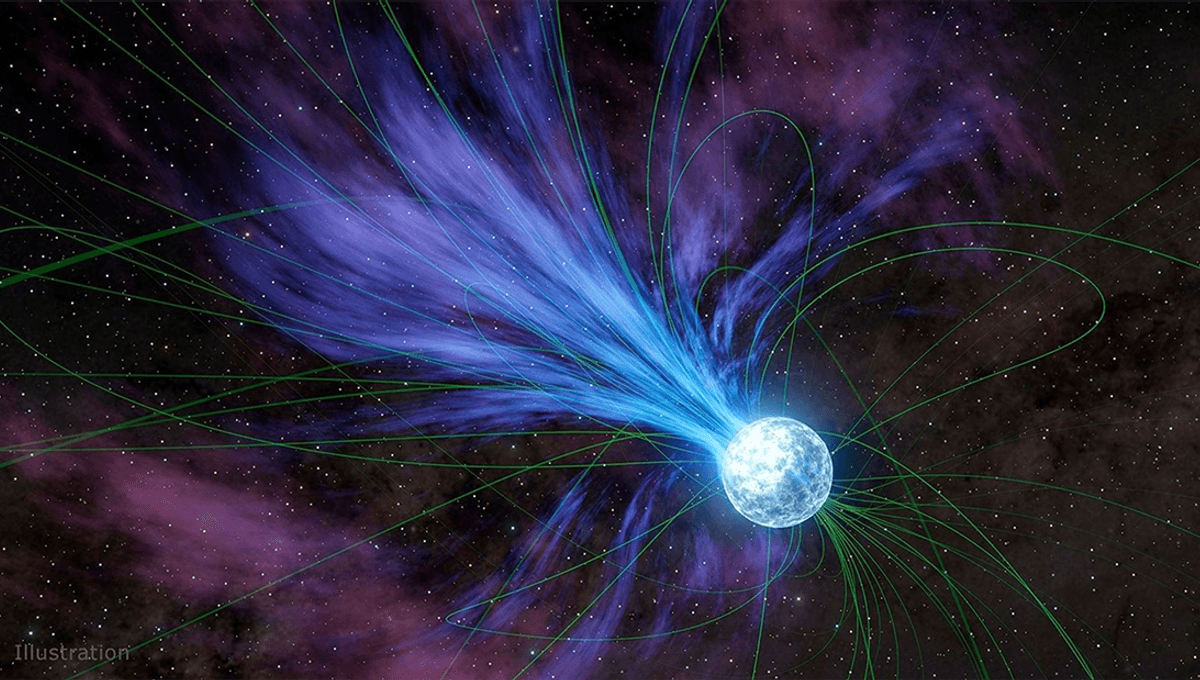
A new study looking at decades-old NASA and European Space Agency (ESA) data may have gone some way to explaining an enduring puzzle about where the heavier elements of the universe are created.
As well as being a delightful shiny metal we all love to gawp at, gold provides scientists with the kind of mystery they do so enjoy solving: In short, there is too much of it.
Through many years of work, we have a pretty good idea of how many elements in the universe were formed. Lighter elements hydrogen, helium, and a little dusting of lithium and beryllium were formed in the early universe when it cooled enough for atomic nuclei to capture electrons, around 380,000 years after the Big Bang.
Heavier elements, up to iron, can be forged through nuclear fusion inside stars under extreme temperatures and pressure. But heavier elements, i.e. those with more protons and neutrons, are a little more difficult to explain, especially in the abundances in which we see them.
“It’s a pretty fundamental question in terms of the origin of complex matter in the universe,” Anirudh Patel, a doctoral student at Columbia University in New York, said in a NASA statement. “It’s a fun puzzle that hasn’t actually been solved.”
That’s not to say that scientists are completely baffled. While we are fairly confident of the process – rapid neutron capture – the source that creates and spreads heavier elements including gold throughout the universe remains a subject of discussion and study.
“Roughly half of the elements in our universe heavier than iron are synthesized through the rapid neutron capture process (r-process). Despite this recognition, identifying the astrophysical sites that give rise to the necessary conditions for an r-process has remained challenging,” the team explains in their paper.
“Possibilities include neutron star mergers, proto-neutron star winds during core-collapse supernovae, and black hole accretion disk outflows in collapsars, among other sources.”
Though these are good candidates for forming the heavier elements, there are problems. For example, neutron star mergers are thought to occur too late on in the universe to account for the earliest gold and other heavy elements.
In the study, the team looked back through archival data from NASA and ESA telescopes and found a potential source, which they believe could account for up to 10 percent of the elements in the galaxy heavier than iron.
“It’s answering one of the questions of the century and solving a mystery using archival data that had been nearly forgotten,” Eric Burns, study co-author and astrophysicist at Louisiana State University in Baton Rouge, added.
The study lends support to the idea that magnetars – a type of neutron star with incredibly strong magnetic fields – are the source of 1-10 percent of the galaxy’s heavier elements. The team had initially predicted that if magnetars are the source of heavier elements, it would be apparent in visible and ultraviolet light. The problem was seeing a gamma ray signal bright enough.
“At some point, we said, ‘OK, we should ask the observers if they had seen any’,” Brian Metzger, professor at Columbia University and senior research scientist at the Flatiron Institute in New York, added.
The team looked through archival data at a giant flare observed in December 2004, and noticed that a smaller signal had been detected from the magnetar by ESA’s International Gamma-Ray Astrophysics Laboratory (INTEGRAL). Looking at the signal, they found it to match very closely to the predicted signal of a magnetar forging and distributing heavier elements in a magnetar flare.
“The finding that magnetars produce heavy elements, as just the second directly confirmed r-process source after neutron star mergers, has implications for the chemical evolution of the galaxy,” the team writes in their study. “In particular, giant flares offer a confirmed source that promptly tracks star formation.”
Though certainly a promising lead, more observations will be necessary in order to confirm the model. This will be made easier with NASA’s forthcoming COSI (Compton Spectrometer and Imager) mission set to launch in 2027.
“It’s very cool to think about how some of the stuff in my phone or my laptop was forged in this extreme explosion of the course of our galaxy’s history,” Patel added.
The study is published in The Astrophysical Journal Letters.
Source Link: 20-Year-Old "Forgotten" NASA Data May Solve Mystery Of Where The Universe's Gold Came From